 This week I attended the WebRTC “conference in a conference” that was part of Enterprise Connect in Orlando Florida.
This week I attended the WebRTC “conference in a conference” that was part of Enterprise Connect in Orlando Florida.
In addition to being a welcome respite from the lingering cold weather of my home in Virginia, it was also a welcome opportunity to network with the leaders and experts of the WebRTC world. I spent as much time tweeting as I did actually talking to people though – there was so much to absorb and the active twitter stream of myself and others became my notepad. Unfortunately I did not catch the twitter handles or names of everyone who made these comments I quoted, if it was you, send your username to me at Arin@AgilityFeat.com and I’ll link to you from here.
Here are 4 key insights I took away from the conference.
#1: WebRTC is nothing by itself
"Figure out the value of your app first, then figure out how. If 'how' leads to #webrtc, fine, but start w/ value." #enterprisecon
— Arin Sime (@ArinSime) March 17, 2014
This is a point that I increasingly hear, and I completely agree with. WebRTC is an evolving standard and a set of technologies, but by themselves, they are useless. You cannot build a profitable business or revolutionize your industry with a technology. You build a business on features and value delivered to customers.
Many of us, including myself, get very excited by the possible applications of WebRTC. We can’t get too excited though about something that by itself, customers don’t care about. Customers only care about solutions, not how you implement them.
A similar refrain is to start any discussion of WebRTC with a phrase like “video/audio in your browser, with no downloads or plugins required!” It’s certainly part of my elevator pitch, but should it be? The lower friction to using WebRTC is certainly attractive, but one panelist also pointed out that “No plugins or downloads cannot be the only reason for WebRTC – look at how many people downloaded whatsapp and skype.”
It’s a valid point. If an app requiring a download solves customers problems significantly better than your WebRTC solution, then users will go with the downloadable app. Make sure you are still solving the right problems.
#2: WebRTC offers privacy
"#webrtc allows us to build apps like dropbox, skype, webex, where encryption helps prevent NSA or other snooping." #EnterpriseCon
— Arin Sime (@ArinSime) March 17, 2014
One of the big values of WebRTC is its encrypted peer to peer nature. This means that after you have completed the initial handshaking process, you are in a very private conversation. This was emphasized by a number of speakers, including the quote above about how this opens the door to easily building apps that are much harder for your competitors or governments to snoop on.
Perhaps the use case that this built-in privacy of WebRTC will affect the most people is healthcare. HIPAA compliance in the United States requires, among many other things, that all patient data must be protected. This is an obstacle to telemedicine, where applications must be extra careful that all conversations about patients are kept private. Telemedicine apps built using WebRTC can get over this hump because of its encrypted and peer to peer nature. WebRTC does not automatically make you HIPAA compliant, but one of the interesting demos at the conference this week was Net Medical Xpress, which is using a WebRTC based solution in a highly regulated industry. Look for more of this in the future.
#3: WebRTC is not disruptive … yet
"We don't know yet how #webrtc will disrupt industries – who thought in 1992 browsers would disrupt banking? But it did." #enterprisecon
— Arin Sime (@ArinSime) March 17, 2014
I was once on a large boat in the Potomac River when one of the engines failed as we were navigating out of the piers. I stood at the stern of the boat, helpless, as the boat drifted into the large concrete seawall. Although it was futile, I grabbed a metal pole used for fishing buoys out of the water and tried to use that to brace the boat and keep it from hitting the seawall. It didn’t work.
The message to the many traditional telco businesses at Enterprise Connect was that WebRTC is not going to sink your business yet, but at a minimum you do need to keep an eye on it. If you are a startup seeking to disrupt your industry by introducing much better communication tools, WebRTC can help you do it without having to hire telecom developers.
If you’re already in a telecom related business, WebRTC is not going to kill your core business model yet, but you certainly don’t want to be the last person in your industry to adapt to it. Don’t watch your competitors from the vantage point of your sinking boat – start preparing now.
Cullen Jennings is a technologist and Fellow at Cisco, and an important player in the WebRTC standards. Cullen gave an excellent morning talk about the state of WebRTC, and many people were repeating his statement that “Someone in your company should at least be playing with this right now!”
I’ll go one step further and say that if you want to be the innovator in your industry or company, then that “Someone” should be you.
#4: WebRTC is all about in-context
"You have to find customers with problems in-context, on the site, help them there." #webrtc #enterprisecon #DoItLikeMayday
— Arin Sime (@ArinSime) March 17, 2014
If the “no downloads” aspect of WebRTC is not what makes it revolutionary by itself, then what makes it so special? I think it’s a corollary, the “in-context communications” aspect of WebRTC, and I heard panelists at Enterprise Connect make the same point.
This is the beauty of Amazon’s MayDay customer service application for the Kindle. If you are having a problem with your Kindle, you dial up a customer support agent immediately. You video chat with them, and they can draw on your screen, help you find what you are looking for, and even take control of your Kindle if needed to show you something. None of this requires you to switch applications, call a phone number, or step out of what you are doing at all. The MayDay representative is there, “in” your app, ready to help you where and when you are having problems.
The relative ease with which you can integrate WebRTC into your site, and eventually mobile devices, allows you to completely rethink how you interact with your customers. No more “Contact us” links with an email form to fill out or a phone number to call. Just speak to someone right now, right when and where you need them. It is my dream that this means when I’m on customer support with my bank, never again will I have to read out my account number 5 different times to 5 different customer service reps. They will already know where I am in the banking site, who I am, and they will just get straight to the point and help me.
Now that is revolutionary.
 Interested in learning more about Real-Time data and building real-time web applications? Then you’ll be interested in our free weekly newsletter Real Time Weekly, which provides a round up of the best news about real time web application technologies. You should also check out our book for building Real-Time Web Applications. And you can always contact us to learn more about how we can help your team build real-time applications! (Yes, I do realize the irony that for now, that contact us page I just linked you to is an email form, not in-context communications.)
Interested in learning more about Real-Time data and building real-time web applications? Then you’ll be interested in our free weekly newsletter Real Time Weekly, which provides a round up of the best news about real time web application technologies. You should also check out our book for building Real-Time Web Applications. And you can always contact us to learn more about how we can help your team build real-time applications! (Yes, I do realize the irony that for now, that contact us page I just linked you to is an email form, not in-context communications.)









